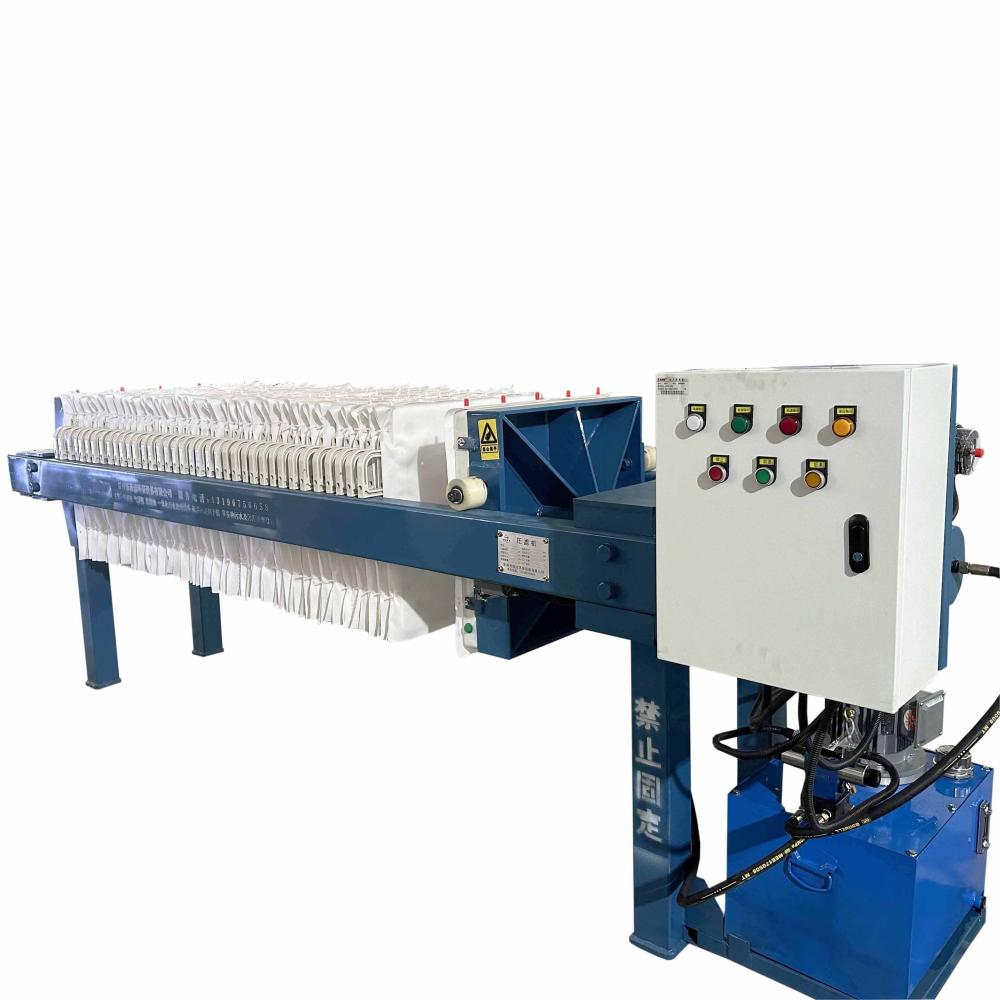Maintenance matters
l. The filter press can only be fed when it is debugged normally. The entire machine must be fully inspected before each shift. Mechanical compression transmission components and reduction gearboxes must be filled with sufficient lubricating oil; hydraulic compression should recheck the oil storage capacity of the oil tank and the working pressure of the hydraulic station. Hydraulic oil is generally replaced once a year. During replacement, the hydraulic system should be thoroughly cleaned and the working pressure of the hydraulic station should be It should be less than the maximum working pressure of the cylinder, but the minimum cannot be lower than the allowable value of the filter pressure. If it is too small, it will cause larger leakage, and if it is too large, it will damage the machine parts.
2. It is prohibited to start the factory when the number of filter plates is less than the specified number to avoid damage to the machine parts. Check the arrangement of the filter plates before adding materials. The filter cloth must not be folded to prevent major leakage. After unloading the cake, the filter plates must be tightly pressed and arranged neatly.
3. After everything is normal, press the filter plate for pressure filtration. The filtration pressure and filtration temperature must be within the specified range. If the filtration pressure is too high, it will cause leakage. If the filtration temperature is too high, the plastic filter plate will be easily deformed, and the suspension will be suspended when feeding. The concentration should be uniform. There must be no impurities; the filter cloth and filter plate must be rinsed clean after unloading the cake, and no residue is allowed to stick to the sealing surface or the feed channel, otherwise it will affect the smooth flow of the feed and the sealing of the filter plate, causing damage to both sides of the filter plate. The pressure is unbalanced, causing the filter plate to be deformed and damaged.
4. The selection of filter cloth must meet the filtration technical requirements of the filter paddle. The new filter cloth should be shrunk before making, and the opening diameter should be smaller than the filter plate pore diameter. When matching the filter plate, the cloth holes and plate holes should be relatively concentric, and the feed hole should be relatively concentric. The cloth slip should be close to the wall of the cylinder, otherwise it will cause unclear filtration, low filtration rate, rupture of the cloth cylinder, and failure to achieve the expected filtration purpose.
5. In the early stage of filtration, the filter press is relatively turbid. When a layer of filter cake is formed on the filter cloth, the filtrate will become clear. If the filtrate remains turbid or clear and becomes mixed, the filter cloth may be damaged or the cloth holes may be deviated from the plate holes. At this time, the valve must be closed or the feed must be stopped to replace the filter cloth. A small amount of leakage caused by capillarity of the filter cloth is allowed between the filter plates.
6. When moving the filter plate, the force should be even and appropriate, and no collision or beating is allowed to avoid damage to the sealing surface and filter wrench handle. After being used for a period of time, the filter cloth will harden and its performance will decrease. For this reason, regular inspections are required. If any changes are found that affect the filtration rate, the corresponding low concentration of weak acid and weak alkali can be used to neutralize and clean the filter cloth to restore its function. If it cannot be restored, replace it in time.
7. Slurry, lotion or compressed air valves must be activated according to the operating procedures and cannot be activated at the same time. The compressed air pressure cannot exceed the filter pressure when the diaphragm is squeezed.








